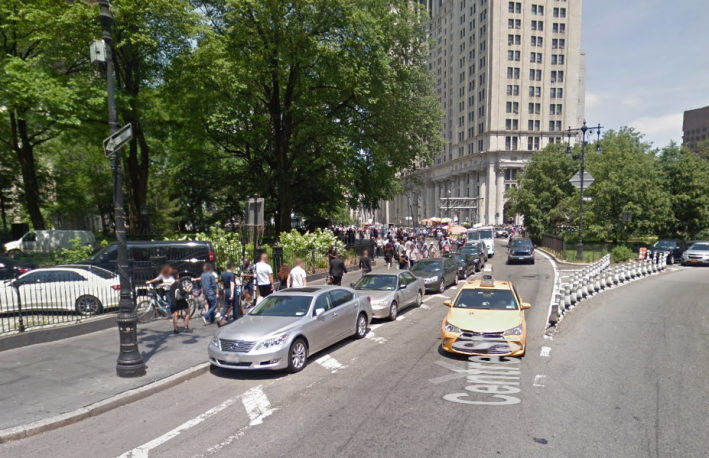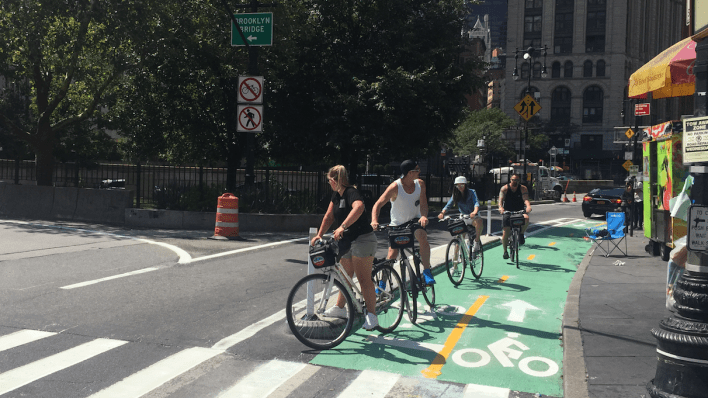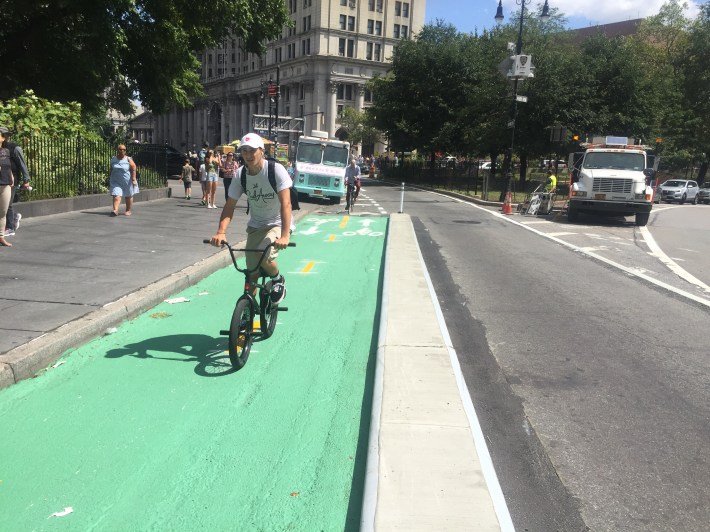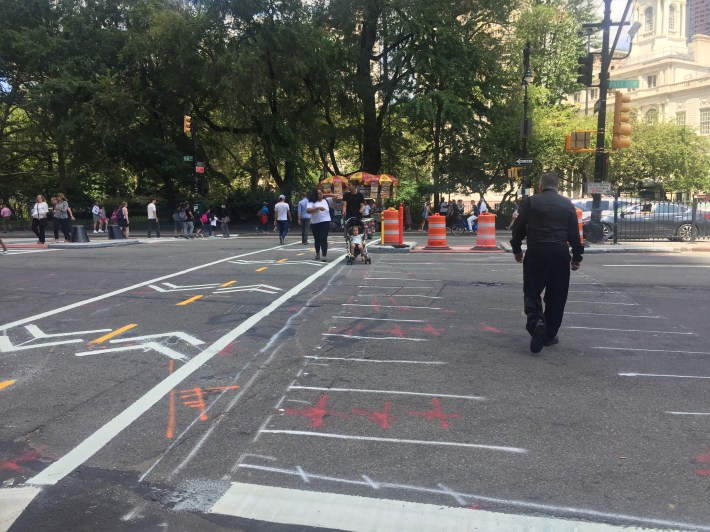A frustrating gap in the Lower Manhattan bike network is about to get filled, as DOT crews wrap up installation of a curb-protected bike lane outside City Hall [PDF].
The short two-way segment on Park Row connects the Brooklyn Bridge path and to narrow, low-speed Lower Manhattan streets. The street previously had a southbound buffered bike lane, which for all intents and purposes functioned as parking for police cars, press vans, and other parking placard holders:

The DOT project shifted those parking spots to underutilized asphalt nearby. The new two-way bike lane, protected by a concrete curb, is especially useful for people biking toward the bridge, who no longer have to ride against traffic.


At Spruce Street, the protected bike lane segment ends at a new crosswalk and concrete island, with chevrons connecting to streets that lead toward the East River and further south. A short contraflow bike lane on Spruce provides a useful connection for cyclists heading to the bridge.

The new bike lane complements improvements on the Brooklyn side of the bridge, where work recently wrapped up on a wider approach to the biking and walking path from Tillary Street. The bridge promenade itself, however, remains incredibly narrow and nearly impassable during much of the day, with heavy tourist foot traffic and assorted obstacles, like police "interceptors." Last summer, DOT announced plans to expand the promenade, but a feasibility study that was supposedly on the way has yet to materialize.
There's more work to do but this is big upgrade for access to the Brooklyn Bridge from Lower Manhattan.
BREAKING: #bikeNYC lane progress! pic.twitter.com/mn3xB9B7gk
— DoorZone (@D00RZ0NE) August 25, 2017






